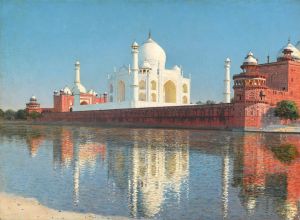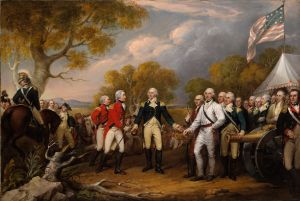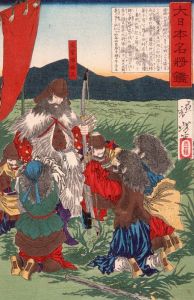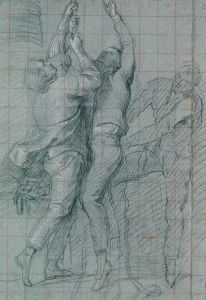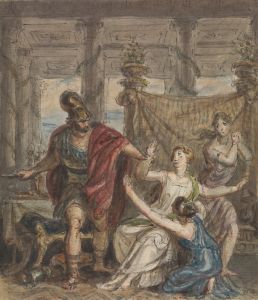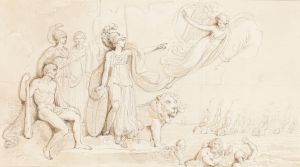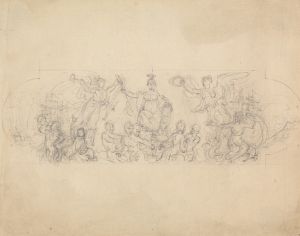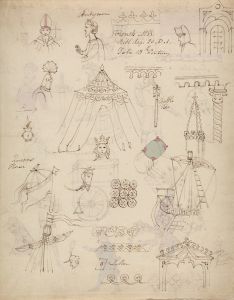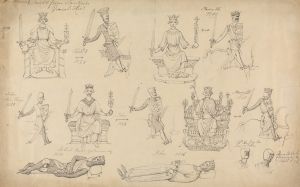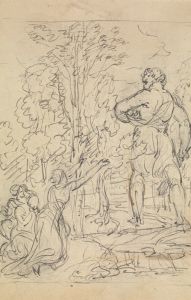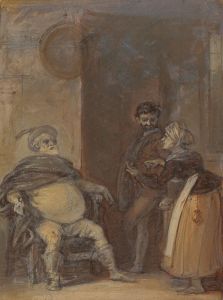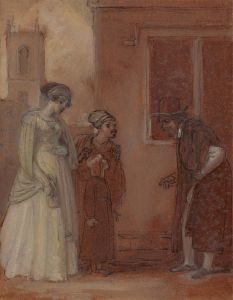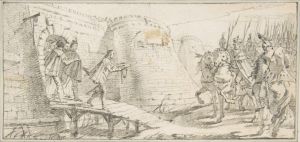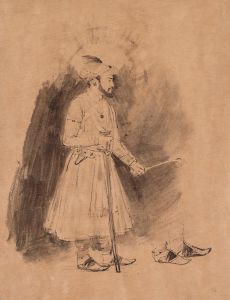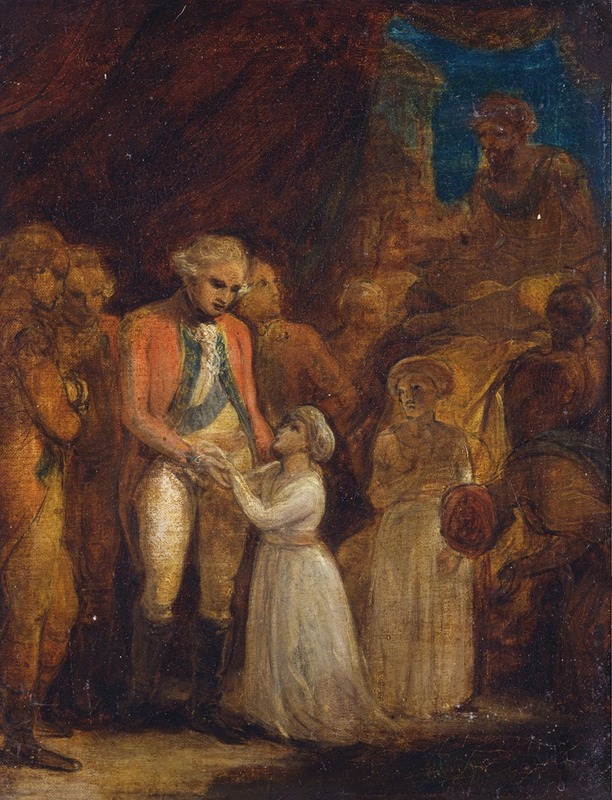
The Two Sons of Tipu Sahib, Sultan of Mysore, Being Handed over as Hostages to General Cornwallis
A hand-painted replica of Robert Smirke’s masterpiece The Two Sons of Tipu Sahib, Sultan of Mysore, Being Handed over as Hostages to General Cornwallis, meticulously crafted by professional artists to capture the true essence of the original. Each piece is created with museum-quality canvas and rare mineral pigments, carefully painted by experienced artists with delicate brushstrokes and rich, layered colors to perfectly recreate the texture of the original artwork. Unlike machine-printed reproductions, this hand-painted version brings the painting to life, infused with the artist’s emotions and skill in every stroke. Whether for personal collection or home decoration, it instantly elevates the artistic atmosphere of any space.
The Two Sons of Tipu Sahib, Sultan of Mysore, Being Handed over as Hostages to General Cornwallis is an oil painting by the British artist Robert Smirke, created in 1792. The artwork depicts a significant historical event that took place during the Third Anglo-Mysore War (1789–1792), a conflict between the Kingdom of Mysore, led by Sultan Tipu Sultan, and the British East India Company, allied with the Maratha Empire and the Nizam of Hyderabad.
The painting illustrates the moment when Tipu Sultan's two sons, Abdul Khaliq and Muiz-ud-din, were handed over as hostages to the British forces under the command of General Charles Cornwallis. This event occurred as part of the terms of the Treaty of Seringapatam, signed in 1792, which ended the war. The treaty required Tipu Sultan to cede significant territories, pay a large indemnity, and provide two of his sons as hostages to ensure compliance with the agreement.
In the composition, Smirke portrays the young princes being presented to General Cornwallis in a formal and ceremonial setting. The painting emphasizes the cultural and political dynamics of the time, with the British officers depicted in their military uniforms and the Mysorean delegation in traditional attire. The scene conveys a sense of solemnity and diplomacy, reflecting the gravity of the occasion.
Robert Smirke, known for his historical and literary-themed works, created this painting as part of a broader trend in British art during the late 18th and early 19th centuries that sought to document and commemorate key moments of the British Empire's expansion. The painting serves as both a historical record and a representation of the power dynamics between the British and Indian rulers during this period.
The original painting is held in the collection of the British Library in London. It remains an important visual artifact for understanding the historical relationship between Britain and India during the colonial era, as well as the personal sacrifices and political strategies involved in the conflicts of the time.





